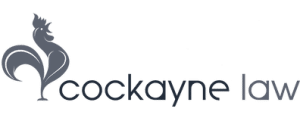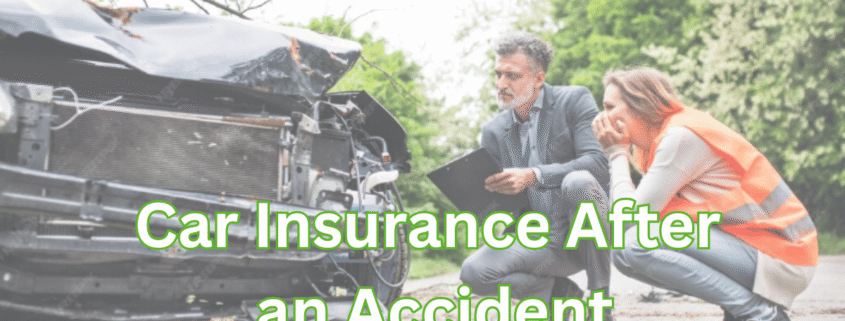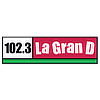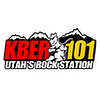Car Insurance After a Crash in Utah: What To Know Now
After a Utah crash, your PIP pays first for medical bills, up to $3,000. You can pursue the at fault driver when costs pass $3,000 or for serious injuries. Report, document, and claim quickly, then consider help to protect compensation.
If you were just in a wreck, you might be asking one question: who pays and when. The first part of your medical care is covered by a no-fault system in Utah. As a result, personal injury protection is usually paid first under your own policy. This may allow you to sue the driver who caused the accident.
The measures you take in the first few days after a crash matter a lot. Keep essential records with you, visit a doctor, and file your claim on time. Whether the injury keeps you out of work or the car is totalled, you’ll need a plan to get back on your feet. When you think that situation is getting tough, a Utah car accident lawyer can help you understand your rights and deal with the insurer.
Key Things You Should Know
- No fault PIP pays medical bills first
- You can step outside no fault after $3,000
- Certain serious injuries also meet the threshold
- Utah uses modified comparative fault rules
- File claims and lawsuits within set deadlines
- Keep photos, bills, and repair estimates
- Do not guess when speaking to adjusters
- Ask your doctor to link injuries to crash
- Rental, total loss, and UM/UIM matter
- Simple safety habits cut future claim risk
Utah Car Insurance After a Crash: The Basics
Drivers in Utah must carry liability insurance and personal injury protection which is called PIP. At a minimum, policies include:
- $25,000 for an individual’s injury
- $65,000 for each accident
- $15,000 for property damage
- $3,000 in PIP
You don’t have to worry about who caused the accident; PIP pays your medical bills first. Moreover, many drivers in Utah buy uninsured and underinsured motorist coverage. They do this to safeguard themselves in case the at-fault driver does not have any insurance or has insufficient coverage. These add-on coverages are essential in hit-and-run events or low-limit policies.
PIP is meant to be fast. It can also include limited wage loss and household help when injuries keep you from working or doing basic tasks. The exact benefits depend on your policy. Keep all receipts and doctor notes together. In this way, your carrier can process the claim faster.
In cases where medical bills are under $3,000 and injuries are minor, you may be eligible for PIP and liability coverage. When costs rise or injuries are serious, you can move beyond no fault and make a claim against the other driver’s insurer.
In the first 48 hours, what to do?
- See a doctor and follow all care plans.
- Take photos of vehicles, scenes, and injuries.
- Notify your insurer and open PIP and property claims.
- Save every bill and estimate.
When You Can Step Outside No Fault?
Utah lets you pursue the at fault driver when your crash-related medical bills are more than $3,000. You can also step outside no fault if you suffered certain serious injuries, such as permanent disability, loss of a body part, permanent disfigurement, or death. Reaching either path lets you claim pain and suffering and other losses from the liable driver’s insurer. Keep a simple log that will include dates, doctors, bills, and symptoms. This helps you show you crossed the threshold or meet a serious-injury category.
Even when you move beyond no fault, your PIP still pays first. Your health insurance may step in after PIP is used up. Later, the at fault driver’s insurer may reimburse those payments through settlement. The key is clean records and consistent treatment. If you are unsure which coverage applies, ask questions before you sign any forms. A short call with a car accident attorney in Utah can prevent mistakes that slow your claim.
Utah Comparative Fault and Your Payout
According to Utah’s comparative fault rule, there is a 50% bar on fault. Money cannot be collected from the other driver if you are 50% or more at fault. In cases where you are less than 50% at fault, your payment will be reduced based upon your percentage of fault. A 20% fault result, for example, would result in a 20% drop in your award.
Here, evidence is crucial. Various factors may affect a claim’s success, including photos, skid marks, traffic camera clips, black box data, and witness names.
Do not guess when you talk to an adjuster about fault. Stick to facts and what you know. If you feel pressured, pause the call and get guidance from a car accident lawyer in Utah who can speak for you. A simple misstatement can be used to raise your fault share. Written statements should be brief and reviewed with care. It is important that if the adjuster requests a recorded statement, you understand why and if it is required.
Deadlines, Notices, and Claim Steps
Utah’s deadline to file a personal injury lawsuit after a crash is generally four years. Wrongful death claims have a two-year window. If you have a claim against a government entity, you have to act fast. There are special rules and timelines for these types of cases since they require extra notice. When you settle, it provides you with leverage and protects your rights. Take note of your calendar and contact a lawyer as soon as possible.
Basic claim path:
- Open your PIP claim and property claim right away.
- Get estimates from trusted shops and keep copies.
- Send medical bills to PIP first.
- When bills pass $3,000 or injuries are serious, open a bodily injury claim with the at fault carrier.
- Track lost wages with employer letters and pay stubs.
- Save proof of all out-of-pocket costs.
- Do not sign a release until treatment is stable.
If talks stall, a car accident attorney in Utah can gather evidence, value the case, and handle negotiations. If needed, they can file suit before the deadline so your claim stays alive.
Repairs, Total Loss, Rental Cars, and Diminished Value
Property damage claims feel urgent because you need a safe car now. A property insurance policy should handle repairs if the other driver is clearly at fault or if there is a total loss. If liability is disputed, you can use your own collision coverage. In this way, you can let insurers sort it out later.
Consult with the shop management about the repair time and whether original parts will be used. A totalled car’s real cash value is determined by local market data, not its purchase price. For maximum value, keep track of upgrades and recent work.
Rental coverage depends on the policy. The at fault carrier usually pays a reasonable daily rate while your car is in the shop. If you use your own rental coverage, check the daily limit and total days allowed. After major damage, you may also have a diminished value claim. As a result of the crash, there is a decline in the resale value of the vehicle. Gather listings for similar cars without accidents to support your number.
Practical Driving Safety Tips for Utah Roads
Good habits lower risk and can cut claim headaches later. Use these simple steps on city streets, mountain canyons, and winter roads.
- Leave more space in snow and rain.
- Keep proper tire inflation and tread health.
- Check lights and wipers monthly.
- Refrain from speeding in work zones and around schools.
- Keep a blanket and water kit on hand.
- Use a dashcam if budget permits.
Plan routes with weather in mind. Black ice forms fast in shaded spots and bridges. After any near miss, pull over when safe and take a breath. Building quiet road habits now can prevent injuries and keep your record clean, which also keeps insurance costs lower.
Hire the Best Car Accident Injury Lawyer in Utah: Why Many Choose Cockayne Law?
When injuries are real, you need a focused legal team that knows Utah rules and insurers. Chris Cockayne is a Utah-licensed attorney whose practice centers on personal injury and auto crashes. His firm, Cockayne Law, handles liability disputes, medical evidence, and settlement talks across the state. The team builds cases with medical opinions and hard proof, then pushes carriers for full payment. Past clients are often referred by friends and family. They speak to the trust built over time.
What does this mean for you? First, talk about the value of your claim and the parts of the file that need work. Second, help with deadlines, recorded statements, and liens. If you are dealing with long treatment or complex fault, calling Cockayne Law for a free case review can bring clarity fast, and it lets you focus on healing while your file moves forward.
Final Thoughts
Car insurance rules can feel confusing right after a crash. Start with care, records, and on-time claims. Let PIP do its job, then look at the path to recover full losses from the driver who caused the wreck. Fault, deadlines, and medical proof drive real outcomes. If questions pop up, a seasoned car accident attorney in Utah can help you make smart choices and avoid avoidable mistakes. Your health comes first. Your claim should support that, not the other way around.
FAQs
Who pays my medical bills after a Utah crash?
Your PIP pays first, usually up to $3,000, no matter who caused the crash. If your bills pass $3,000 or you suffered certain serious injuries, you can seek payment from the at fault driver’s insurer for pain, suffering, and other losses.
What is the time limit for suing the at-fault driver in Utah?
You can step outside no fault when your medical bills exceed $3,000 or you have a qualifying serious injury. At that point, you may bring a claim for losses PIP does not cover, including pain and suffering.
How do you handle an uninsured driver?
A policy that covers uninsured motorists can step in if you purchased one. No-fault insurance pays for injuries caused by at-fault drivers. The underinsurance coverage comes in handy when the limits of the policy are too low. In cases involving serious injuries, these protections are important.
When should I call a lawyer?
Call early if injuries are more than minor, bills are rising, fault is disputed, or the adjuster is pushing for a quick release. A car accident lawyer in Utah can sort coverage, value the case, and speak for you while you heal.









